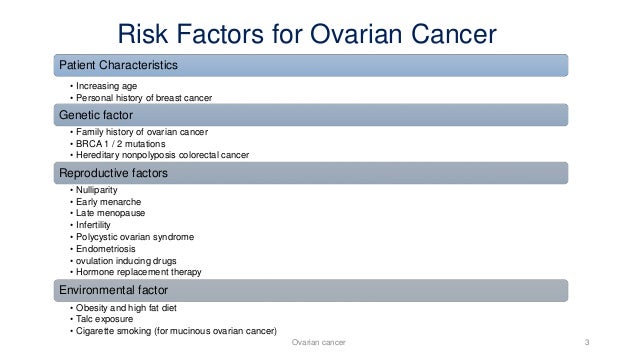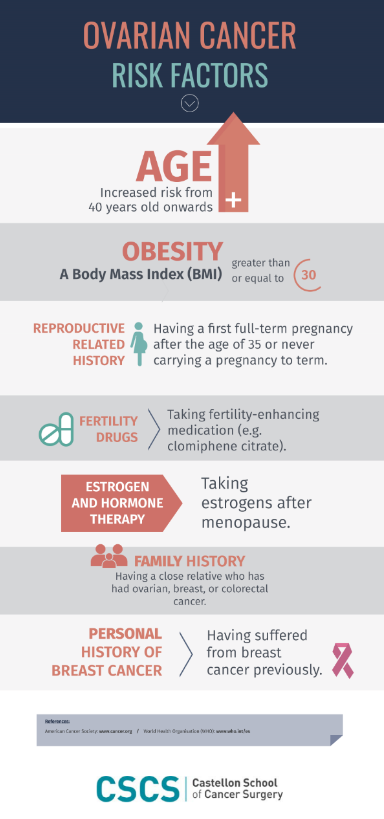Your ovarian cancer risk is increased if your mother sister or daughter has or has had ovarian cancer. About 13 of women in the general population will develop ovarian cancer sometime during their lives.
 Ovarian Cancer Australia Understanding The Risks Ovarian
Ovarian Cancer Australia Understanding The Risks Ovarian
what are the risks of ovarian cancer is important information accompanied by photo and HD pictures sourced from all websites in the world. Download this image for free in High-Definition resolution the choice "download button" below. If you do not find the exact resolution you are looking for, then go for a native or higher resolution.
Don't forget to bookmark what are the risks of ovarian cancer using Ctrl + D (PC) or Command + D (macos). If you are using mobile phone, you could also use menu drawer from browser. Whether it's Windows, Mac, iOs or Android, you will be able to download the images using download button.
Your risk of developing ovarian cancer depends on many things including age genetics lifestyle and environmental factors.

What are the risks of ovarian cancer. However several factors may increase a womans risk for ovarian cancer including if you are middle aged or older. By contrast it is estimated that about 44 of women who inherit a harmful brca1 mutation and about 17 of women who inherit a harmful brca2 mutation will develop ovarian cancer by the age of 80. When this process begins there may be no or only vague symptoms.
Increased risk for ovarian cancer can also come from your fathers side. The risk also gets higher the more relatives you have with ovarian cancer. We dont yet know exactly what causes most ovarian cancers.
Most women who develop ovarian cancer are. Anything that can increase your risk of cancer is called a risk factor. As discussed in ovarian cancer risk factors we do know some factors that make a woman more likely to develop epithelial ovarian cancer.
Ovarian cancer can run in families. At this late stage ovarian cancer is more difficult to treat. Ovarian cancer screening recommendations for women at slightly increased risk.
The likelihood of developing the disease may be higher if a woman has one or more ovarian risk factors. Early stage ovarian cancer in which the disease is confined to the ovary is more likely to be treated successfully. It results in abnormal cells that have the ability to invade or spread to other parts of the body.
Ovarian cancer often goes undetected until it has spread within the pelvis and abdomen. A reduction in ovarian cancer risk with use of oral contraceptives is also seen among women who carry a harmful mutation in the brca1 or brca2 gene 1921. Be aware of the symptoms of ovarian cancer and contact your doctor if these are new occur almost daily and are present for more than 23 weeks.
Have a gynecologic exam once a year. Much less is known about risk factors for germ cell and stromal tumors of the ovaries. Have close family members such as your mother sister aunt or grandmother on either your mothers or your fathers side who have had ovarian cancer.
Oral contraceptive use is associated with 15 to 20 lower risks of colorectal cancer 12 14 22 23. One key risk factor is age. Most women get it without being at high risk.
While the exact cause of ovarian cancer may not be known several factors may increase the risk of developing the disease. Ovarian cancer is a cancer that forms in or on an ovary. Symptoms become more noticeable as the cancer progresses.
Surgery and chemotherapy are generally used to treat ovarian cancer.
Ovarian Cancers Evolving Paradigms In Research And Care
Risk Factors Susan Marie Rupp Foundation
Ovarian Cancers Research Guide
:max_bytes(150000):strip_icc()/ovarian-cancer-causes-5ae776afa18d9e0037ad3016.png) Ovarian Cancer Causes And Risk Factors
Ovarian Cancer Causes And Risk Factors
 Ovarian Cancer Risk Factors Cscs
Ovarian Cancer Risk Factors Cscs
 All Women Are At Risk For Ovarian Cancer
All Women Are At Risk For Ovarian Cancer
 Ovarian Cancer Symptoms Risk Factors And Prevention
Ovarian Cancer Symptoms Risk Factors And Prevention
 Pill And Pregnancy Have Biggest Effects On Ovarian Cancer Risk
Pill And Pregnancy Have Biggest Effects On Ovarian Cancer Risk
 Frequency And Percentage Of Women Knowledge Of Ovarian
Frequency And Percentage Of Women Knowledge Of Ovarian
Is Ovarian Cancer Prevention Currently Still A

